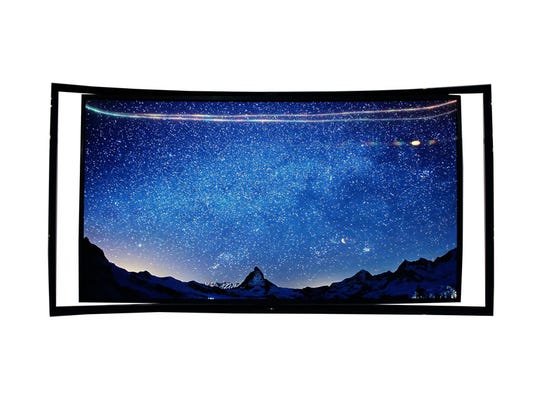 |
| Samsung's new curved OLED TV brings a high level of picture quality -- for a high price.(Photo: Reviewed.com) |
Even though HD content doesn't have many regular complaints, some TV makers are cooking up new technologies that might entice you to upgrade.
Remember all the hype around 3-D TV? Just a few short, painful years later, the industry seems ready to admit that it was not the great savior they'd hoped for.
Last September, the Associated Press reported that "3-D viewership is so tiny that The Nielsen Co.'s methods are unable to capture any meaningful data about viewers' programming preferences." In June, ESPN announced that they plan to shut down ESPN 3D by the end of 2013, citing low adoption.
So what's different about these new technologies? For starters, neither one is trying
to reinvent the television.
OLED, or organic light-emitting diodes, is best understood as a new alternative to the old plasma vs. LCD debate — a new way to make light and color appear on a screen. The end result is a more dynamic and striking picture than either of the older display technologies could muster.
RELATED: 4K vs. HDTV: can you tell the difference?
RELATED: Take a close look at Samsung's new OLED TV
Defining 4K is even simpler: more pixels. A lot more pixels, in fact, which equate to about four times more detail than an HD television.
Both sound like strictly better technologies than what we currently have (and yes, a new TV could be both 4K and OLED). But both face a few obstacles before they can gain a foothold.
The biggest challenge for OLED is that the displays are difficult to make. "They have a relatively high rate of defects they have to discard," says Paul Gagnon, director of global TV research at NPD DisplaySearch. He notes that at best, only 50% of OLEDs manufactured are fit for sale, though it might be as few as 10%. By comparison, LCD yields are 90% or higher.
Those kinds of manufacturing struggles point to high prices for the foreseeable future, but some manufacturers see hope on the horizon. "OLED requires [fewer] materials than LCD … so it has the potential to get cheaper," says Tim Alessi, director of new product development at LG Electronics USA.
THE SCIENCE: OLED TVs leave (almost) no room for improvement
TV TECH: Why your TV's color settings matter
The obstacles for 4K are more considerable. OLED simply changes the material the screen is composed of, but has nothing to do with content. In order to appreciate 4K, you not only need a new display, but also TV shows and movies recorded in 4K. That, in turn, requires the whole supply chain of producers, broadcasters and cable companies to adopt the format, which means new equipment. "One of the challenges there is bandwidth," explains Dan Schinasi, senior manager of TV product planning at Samsung. "It's a larger signal with four times the information."
It's also likely that 4K broadcasts will require viewers to upgrade their cable or satellite boxes, Blu-ray players, and other components in their home theaters. The Consumer Electronics Association forecasts that shipments of 4K TVs will surpass 1 million in 2015, but that's less than 3% of the market. Consumers will need to see a clear demonstration of 4K's benefits before they spend the money to adopt in large numbers.

